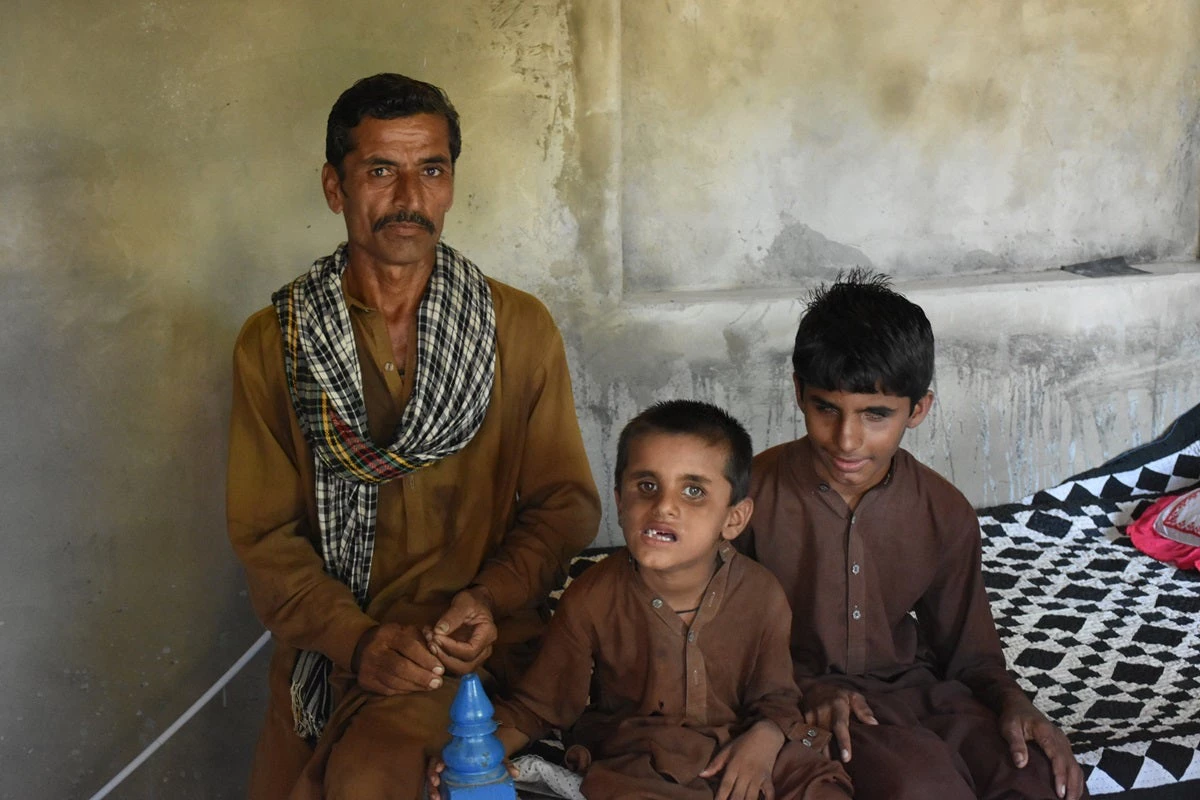 A visually impaired boy in Sindh uses cane and tactile paving to navigate through his village
A visually impaired boy in Sindh uses cane and tactile paving to navigate through his village
As a term, “disability” is not a monolith, but rather an umbrella description for a broad range of individuals suffering from physical impairments or psychological impediments. The World Bank estimates that 15% of the world’s population experiences some form of disability.
Research has shown that individuals with disabilities are more likely to experience barriers in accessing education, meeting their own healthcare requirements, and employment prospects. Disabled individuals are also more likely to face higher rates of poverty, which can risk further exacerbating their conditions, or compromise their health and wellbeing in other ways. Furthermore, in Pakistan, it can carry social stigma, leading to situations where disabled individuals are seen as a burden to their caregivers. This leads to these individuals facing being excluded in most social, professional, and public circumstances, and having severely limited access to both public and private spaces.

The Sindh Flood Emergency Housing Project (SFEHRP), which facilitated community development and rehabilitation after the devastating 2022 floods, has strived to uphold the World Bank’s ten commitments towards Disability-Inclusive Development. These commitments mandate equal access to education, healthcare services, employment, and other social protections as requirements of the project’s framework. In addition to facilitating reconstruction of houses, the project is also centering disability access as one of the core components of reconstruction and rehabilitation activities.
Recently validated data concludes that over 115,000 individuals from the flood-affected populations are disabled, out of which almost 50,000 are children and a further 26,000 are women. This has meant that successful implementation of the Bank’s disability-inclusive development commitments has necessitated extensive stakeholder consultations with these vulnerable members of the population.
One outcome of these consultations has seen the World Bank build upon previous work undertaken during reconstruction efforts for the 2015 Nepal earthquake by translating a manual on constructing houses and communities with universal, inclusive access for disabled individuals in mind. This training enables masons to take environmental and safety considerations into account, and emphasizes the necessity of using local construction materials. It also prioritizes constant communication with homeowners, in order to ensure that houses are designed to meet the household’s unique needs.
Tactile paving to better support the mobility of visually impaired children in Haroon Sheikh village is the first of its kind in Pakistan.
In Haroon Sheikh settlement, which is home to at least 4 congenitally blind children, the World Bank team introduced the idea of tactile paving for the village in order to better support the mobility of the visually impaired. This paving is first of its kind ever in Pakistan, and particularly in a rural setting. Obtaining the tactile paving proved to be an uphill task due to a lack of local demand for these tiles. Partnering with a local non-profit civil society organization, HANDS, ensured the paving was eventually sourced and specially produced for the village. As a result, the project not only laid down tactile paving of 900 square feet linking the households with visually impaired children, but also built the village’s first-ever toilets, as well as a handpump which is also connected by the same spread of paving.
This has permitted the children from the Wazir Ali and Shaukat families to gain newfound mobility and independence around their living spaces. Azeema and Wazir Ali had previously had to coordinate their work schedules in a way that ensured at least one of them was at home in order to assist their sons with day-to-day tasks. Thanks to these new facilities, they have both been able to fully commit to working on a nearby farm, a fact that they both express gratitude for.
The visually impaired children from the Wazir Ali and Shaukat families have gained newfound mobility and independence around their living spaces.
Other examples of guidelines that are now present in SFEHRP-constructed houses include the presence of ramps and handrails in and around houses and ensuring that interior spaces and fixtures are reachable for individuals who may be wheelchair-bound or otherwise physically impaired.



Join the Conversation